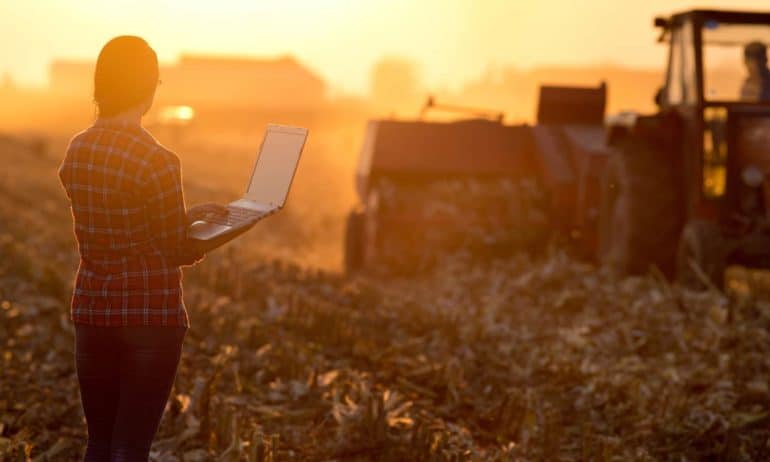Part One of a two part series on work in South Asia conducted by the International Maize and Wheat Improvement Center (CIMMYT)
EL BATAN, Mexico (CIMMYT) – Long before climate smart agriculture became a popular term, farmers and scientists were experimenting with sustainable agriculture techniques to produce high food staple yields with reduced environmental impact.
Since that work began, the need to boost agricultural production while building resilience to climate change and reducing greenhouse gas emissions has become more acute.
Natural resources are under up to five times more stress in South Asia than elsewhere due to agricultural intensification, urbanization, population growth, increasing climate change risks, and difficulties related to land degradation, according to a recent research paper by M.L. Jat, principal scientist based in New Delhi, India with the International Maize and Wheat Improvement Center (CIMMYT), a non-profit international research organization headquartered near Mexico City.
“Over the next 30 years, variability in growing conditions for key staples including rice and wheat resulting effects is projected to lower crop yields by 10 to 40 percent due to climate change,” Jat says, adding that total crop failure will become more common.
“Additionally, during the same period, more than half the current wheat growing area in the key Indo-Gangetic Plains growing area will likely become unsuitable for production due to heat stress.”
However, despite challenges, the future for farmers in the region shows promise, largely due to a combination of efforts by Jat, his CIMMYT scientist colleagues, members of the CGIAR system of agricultural researchers, national agricultural research centers, including the CGIAR Research Program on Climate Change, Agriculture and Food Security, the Borlaug Institute for South Asia (BISA) and the Cereal Systems Initiative of South Asia (CSISA).
ZERO TILL
Zero tillage techniques with rice-wheat farmers have led to massive benefits for the agricultural community and beyond.
The practice involves sowing wheat seed directly into the soil and rice residues left on the fields without burning crop residue or tilling the soil, leading to environmental and financial benefits from protecting soil and water resources, cutting greenhouse gas emissions, while slashing land preparation costs for farmers.
“Initially, the concept of not tilling the soil led to reactions of disbelief from farmers and policymakers,” Jat says. “But now, it’s extremely rewarding to see farmers are planting in untilled land on almost 2 million hectares throughout India. The technique also has huge regional potential as rice-wheat crop rotation systems are widely used throughout Nepal and Pakistan and are equivalent to almost a quarter of global food production.”
For effective zero tillage, farmers are using Happy Seeder, farm machinery developed by a collaborative network of scientists, including CIMMYT scientists. The tractor-mounted implement, which simultaneously chops rice residues into mulch, cuts open a furrow in the field, plants and covers the seed, was funded initially by the Australian Centre for International Agricultural Research (ACIAR), led by Punjab Agricultural University.
In a recent paper titled “Burning issues of paddy residue management in northwest fields of India,” Jat described a range of uses for residues that farmers have traditionally burned to avoid the cost of removal. Many farmers now also use the residues for animal feed and biofuel, for example.
“Farmers can either buy the seeder or hire local service providers to sow their seed on contract if they cannot afford it,” says Jat, who has also conducted research into the benefits of greenhouse gas emissions reduction due to zero tillage techniques.
IRRIGATION INITIATIVE
Rice-wheat, rice-maize, or rice-rice rotations on the same parcel of land, also known as double cropping, sustainably increase production without harming the environment by expanding farmland into natural growth ecosystems. Often groundwater is used for irrigation. In some areas overdraw of groundwater poses a challenge; in other areas, irrigation facilities are not widely developed.
In northwestern Bangladesh, for example, groundwater irrigation is used widely to compensate for drought conditions in the dry winter season. However, in the country’s large coastal region, groundwater extraction leads to high fuel costs for pumping from groundwater. In some areas, deep tube wells also present a health risk due to natural arsenic contamination, says Timothy Krupnik, a CIMMYT systems agronomist who leads CSISA in Bangladesh. Additionally, in some areas shallow groundwater has high salt concentrations, which can be bad for crops.
Krupnik worked with a team to identify where surface water from canals or rivers can be used as a viable irrigation alternative to encourage double-cropping. The research led to the invention of an online geospatial tool to identify surface water irrigation resources and identify where fallow and low-productivity rainfed cropland can be converted to higher- and more stable-yielding (and risk reducing irrigated crops) using this alternative water source. The remote sensing tool developed with CIMMYT’s Urs Schulthess through CSISA allows users to target ideal places to expand irrigation.
“Although Bangladesh will likely remain mostly reliant on groundwater irrigation, the tool identifies available fresh surface water resources and land that can be sustainably intensified with double cropping,” Krupnik says.











